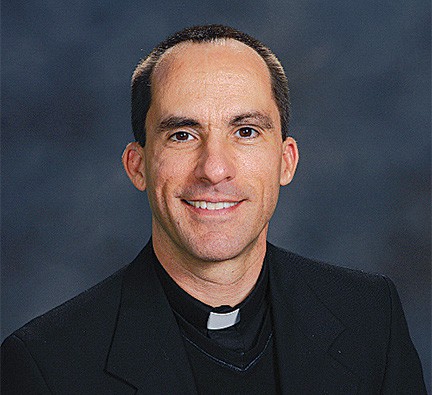
Greetings to all on a relatively quiet day here at the parish church of Saint Joseph in Pedro Santana. Some of our parishioners here in town are being shuttled to a temporary dental clinic staffed by volunteers from Wisconsin just across the border in Haiti. Another operative, this one from New Hampshire and Massachusetts, is coming down from the mountains this morning after six days providing medical care and construction or repair of aqueducts for some of our poorest communities. About to take their place is another medical and engineering operative, some forty in all, who will head to the hills midday tomorrow. Then I will be hosting a group of students from Christendom College who will spend their spring break helping build a chapel for one of our communities and laying down a playground at our school in the mountains, San José Joca, named for Saint Joseph and the River Joca that runs nearby. It is beautiful to see the spirit of charity that animates these laborers in the vineyard. I confess it is also refreshing to have some English interlocutors in my congregation if only for a few days!
Even more importantly, I want to reflect on the spiritual conditions, particularly as last month saw the beginning of my first Lent in the Bánica Mission. As Bishop José Grullon told me, here in the border region there is a continuous cycle of dying and raising up again. Much of the population is transient and especially the young people are apt to be here one day and gone the next, often seeking further studies or work in one of the big cities of Santo Domingo or Santiago, so there is a need for invincible patience in cultivating the Catholic and apostolic spirit. In January, we were blessed with the presence of two Argentine lay missionaries who started the Legion of Mary in Bánica, Sabana Cruz and Pedro Santana. Both Father Jason and myself have a good bit of personal knowledge and experience with the Legion but finding disciples of Christ who are ready to become committed lay apostles, while never easy, seems even harder here.
There is also an acute need for catechesis, most critically for the adult population, as the few catechists are mostly youth or even adolescents. Moreover, there is a widespread disuse of the Sacraments, in many cases ever since receiving Baptism as a child or infant. Certainly a great sign of hope was the pastoral visit that Bishop Grullón made last month, resulting in exactly 72 Confirmations in our parish communities, just like the 72 disciples that Jesus sent out on mission in the Gospel! The national theme for this year, With the Eucharist, Font of Communion, We Give Impulse to the Mission, gives encouragement for remedying estrangement from the Eucharist in particular. I also have some hope that advising people of their Easter duty to receive Communion will prompt a number to approach the Sacraments of Penance and Eucharist in these days. Of course, in many cases an obstacle to receiving Communion is the existence of a conjugal union not blessed by the Church, but here too there is hope in the serious interest in receiving the Sacrament that has been recently shown by a half dozen couples. Besides the foregoing intentions, I ask your prayers especially for the catechumens, both youth and adults, who are preparing to receive Baptism in Eastertide. Here as elsewhere, the restored catechumenate is a sign of the times and a great, hidden source of new vigor and dynamism for the Church.
